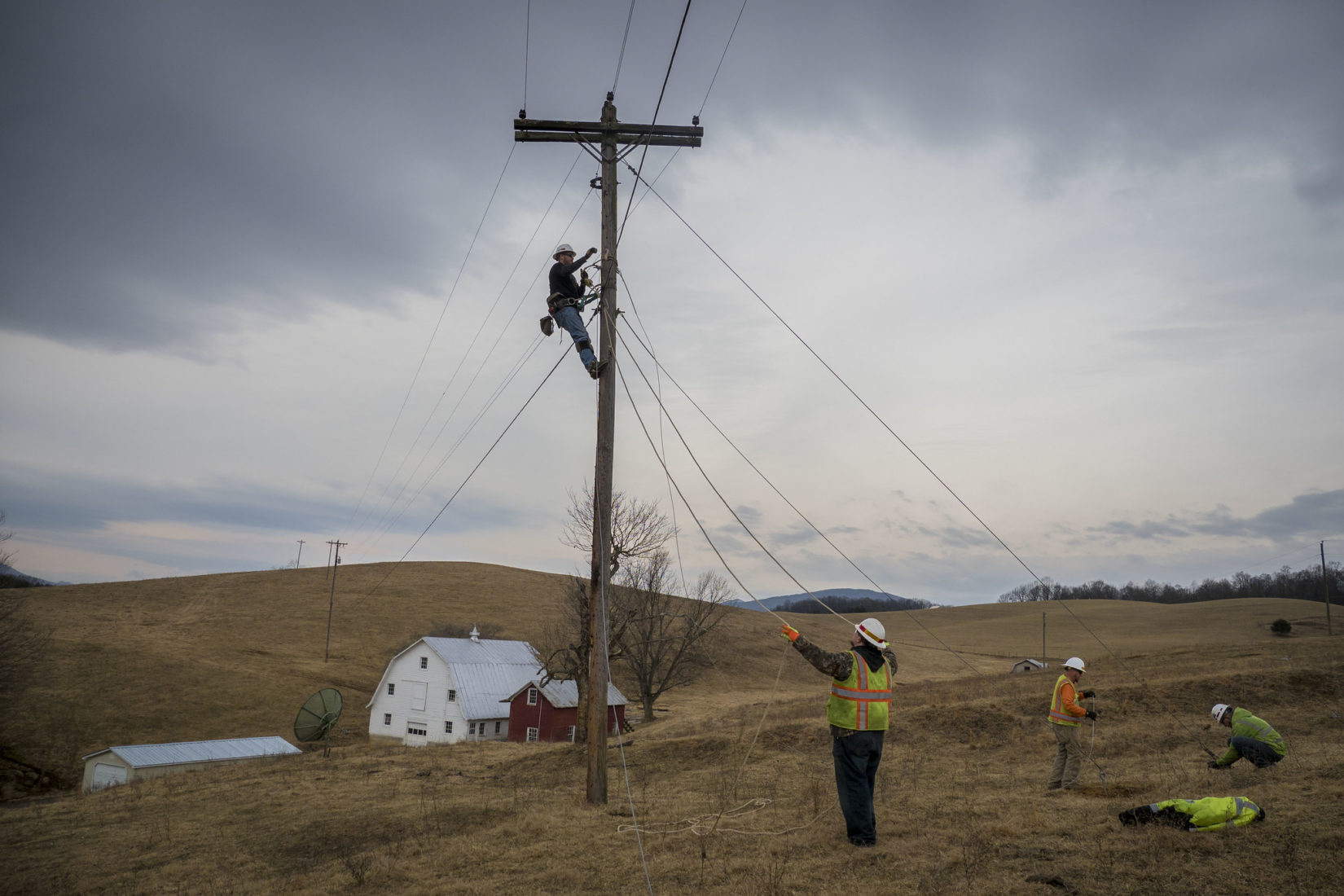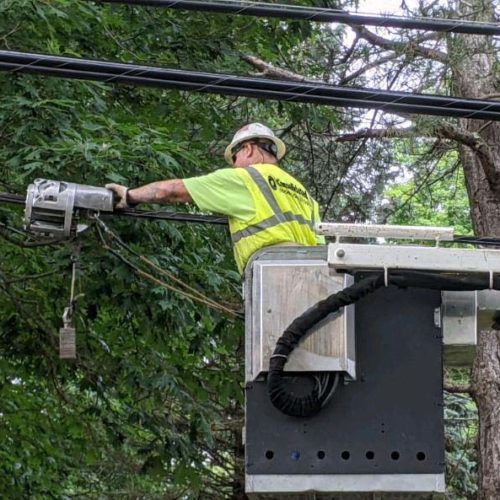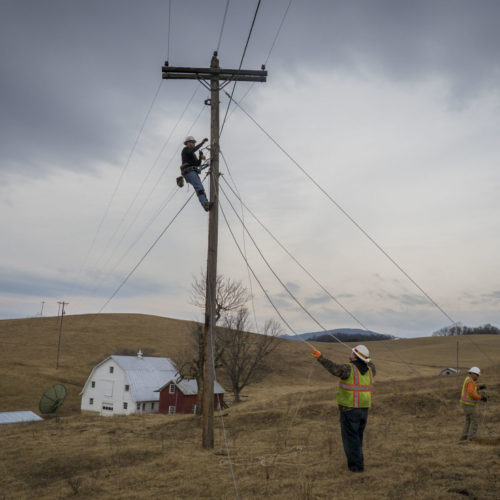American Broadband Initiative Milestone Report
The Milestones Report for the American Broadband Initiative was released to the public on February 13, 2019. In their cover letter to the president that accompanied the report, Secretaries Sonny Perdue (Agriculture) and Wilbur Ross (Commerce) stated, “…while the government serves an important role, we strongly believe that nothing creates innovation more effectively than unleashing the free market economy from burdensome government regulations. Toward that end, the reforms outlined in this report are dedicated to removing regulatory barriers and expanding opportunities for successful private sector capital investments.”

Virginia's BARC Electric Cooperative leads the way in the Lexington, Va. area installing fiber optic cables to the existing electrical grid, which will bring dependable high-speed broadband to the area for the first time. Rural areas where business and residential consumers use broadband service are more likely to enjoy higher incomes, lower unemployment rates and stronger growth than those without broadband. Because broadband offers rural areas connectivity to business, education, health care and other services necessary for economic growth, it is rapidly becoming indispensable in all sectors of the economy. Rural electric co-operatives across the country are increasingly involved in rural broadband deployment. There is growing concern about the lingering urban-rural broadband divide and who will work to deliver broadband to rural communities. USDA Photo by Preston Keres.
The executive summary section of the report listed the following four highlights of federal agencies’ actions:
1. Launch and effectively execute $600 million in new federal investment in rural broadband, using strategies to spur private-sector capital and maximize the value of taxpayer dollars
The U.S. Department of Agriculture is preparing to deploy a new congressional appropriation of $600 million for an innovative broadband pilot program, based on modern, effective strategies that will catalyze increased private-sector investment in broadband infrastructure. These investments will prioritize projects that deploy broadband infrastructure in rural areas that are currently insufficiently connected, with the goal of increasing productivity and improving rural quality of life.
2. Leverage the Department of the Interior (DOI) towers for communications use
Consistent with the presidential memorandum on “Supporting Broadband Tower Facilities in Rural America on Federal Properties Managed by the Department of the Interior,” the DOI inventoried and mapped more than 7,000 tower locations and will make that information publicly available via a geographical information system (GIS) mapping tool. These towers, primarily located in rural areas, will be available to service providers looking to locate equipment on federal property as they expand wireless and wireline broadband networks.
3. Provide tools for expedited access to federal assets in priority markets
The General Services Administration has solicited input from the public on priority markets and assets needed to expand mobile access in underserved markets. GSA will pair that input with new and existing data sources, such as the map of DOI-managed land and towers, to identify and visualize federal assets which can be leveraged by service providers to expand build-outs in these markets. Additionally, GSA will work with other federal agencies to utilize existing statutory authorities to streamline commercial access to assets in these markets. The resulting tools will supply the broadband industry with a new powerful resource to incorporate Federal assets into their expansion plans.
Create one-stop for broadband permitting information
The National Telecommunications and Information Administration will publish flow-charts reflecting current permitting workflows for the most common asset types providing a single location for information on federal permitting of broadband infrastructure. This will include land managed by DOI’s Bureau of Land Management and USDA’s Forest Service, buildings managed by GSA, and towers owned or managed by DOI. As processes are further streamlined, the BroadbandUSA website will be updated to reflect the latest process improvements.
Revise common application form and quarterly metrics for permit requests
Consistent with Executive Order 13821, “Streamlining and Expediting Requests to Locate Broadband Facilities in Rural America,” GSA will revise the common application form for permit requests to be more responsive to stakeholder needs. Additionally, all land-managing agencies will provide GSA with quarterly reports on permitting applications, including the number of applications received, the number approved, the number rejected, the basis for any rejection, and the number of working days each application was pending before being approved or rejected. This data will provide transparency to the public and allow agencies to continue to improve responsiveness.
CSG-ERC will be exploring the important issue of rural broadband in our upcoming policy summit, Rural Broadband – Bridging the Connectivity Divide, on April 26 and 26, 2019, in Wilmington, Delaware.
And mark your calendars for the 2019 Annual Meeting, to be held in Pittsburgh, Pennsylvania, July 28 through 31, where we will be continuing the broadband discussions.





